What is Erosion?
A. Transports soil and sediment from one location to another
B. Process in which sediment is laid down in new locations.
C. The water that is beneath Earth's surface
D. An area of the shoreline that is made up of deposited sediment
A. The process by which wind, water, ice, or gravity transports soil and sediment from one location to another
As stream velocity decreases, which factor will likely increase?
A. erosion of the stream bank
B. deposition of material in the stream
C. amount of material carried downstream
D. size of the particles carried downstream
B. deposition of material in the stream
What caused the grain of sand to move in this pattern?
 A. Water
A. Water
B. Wind
C. Ice
D. Gravity
B. Wind
The presence of which of the following geological features provides the best evidence that glaciers once covered an area?
A. Wide riverbeds
B. Underground caves
C. U- shaped valleys
D. Groundwater Springs
C. U- shaped valleys
The extremely slow movement of material downslope is called?
A. Creep
B. Rockfall
C. Landslide
D. Mudflow
A. Creep
What is Deposition?
A. Transports soil and sediment from one location to another
B. Process in which sediment is laid down in new locations.
C. The water that is beneath Earth's surface
D. An area of the shoreline that is made up of deposited sediment
B. Process in which sediment is laid down in new locations.
Which will most likely be the result of a flood?
A. Rock and soil will be deposited on a floodplain.
B. Sand dunes will form along the river.
C. The land around the river will be less able to
grow plants.
D. Nutrients will be picked up and flow back to the river's source.
A. Rock and soil will be deposited on a floodplain.
Sand dunes often have a wavy surface. What creates this kind of surface?
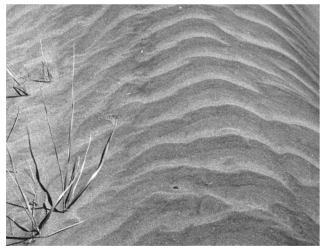
A. Rain falling on the sand
B. Vibrations caused by earthquakes under the dunes
C. Wind blowing across the surface of the dunes
D. Tracks left in the sand as animals look for food
C. Wind blowing across the surface of the dunes
Glaciers are frozen, slow- moving rivers of ice that can move about three feet per day down mountain valleys. How does a glacier help create new soil?
A. By carrying living plant material to the ocean
B. By scraping small particles off large rocks
C. By melting rocks along its path down the valley
D. By freezing small particles of soil to form large rocks
B. By scraping small particles off large rocks
A _______ is the sudden and rapid movement of a large amount of material downslope.
A. Creep
B. Rockfall
C. Landslide
D. Mudflow
C. Landslide
What is a mass movement?
A. The shifting of materials downslope
B. Moving sediment from one place to another
C. The process of dropping sediment
D. Large mass movement of ice
A. The shifting of materials downslope
On the lines below, identify erosion or deposition. 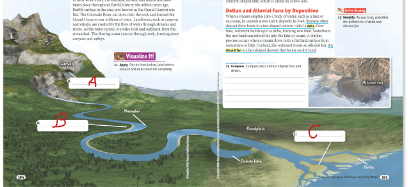
A: Erosion
B:Deposition
C. Deposition (Delta)
Soil in an empty field blows away during a strong wind storm. Which activity slows the erosion of this field over time?
A. Watering the field
B. Plowing the fields in rows
C. Planting grass in the field
D. Building and electric fence
C. Planting grass in the field
What does this diagram show?

A. How water moves rock from place to place
B. How different types of rock are formed
C. How rock gets moisture
D. How freezing and thawing breaks rock
D. How freezing and thawing breaks rock
A rapid movement of a large mass of mud
A. Creep
B. Rockfall
C. Landslide
D. Mudlfow
D. Mudlfow
What is an area of the shoreline that is made up of deposited sediment
A. Sandbar
B. Barrier Island
C. Headlands
D. Beach
D. Beach
Which of these features do you think took longer to form: the sea stack, sea arch, or sea cave? Explain.
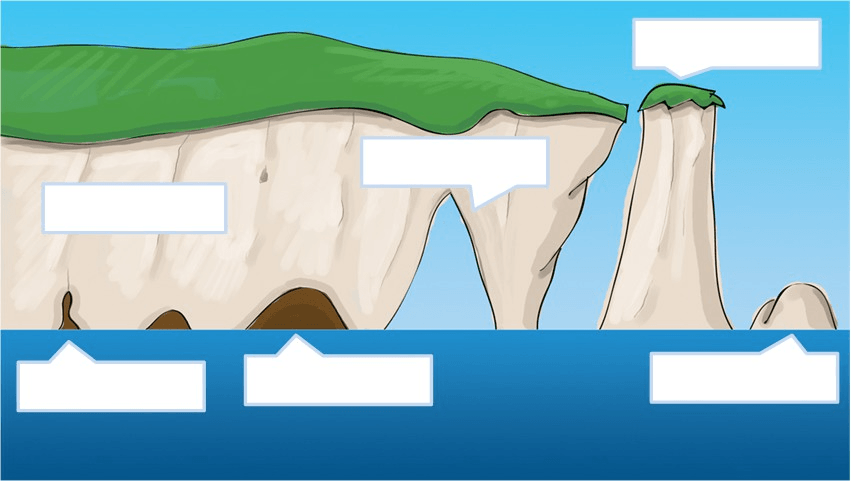
A sea stack takes the longest because it forms from a collapsed sea arch, which formed from a sea cave.
Loess is a very valuable resource. What characteristic of loess makes it so valuable?
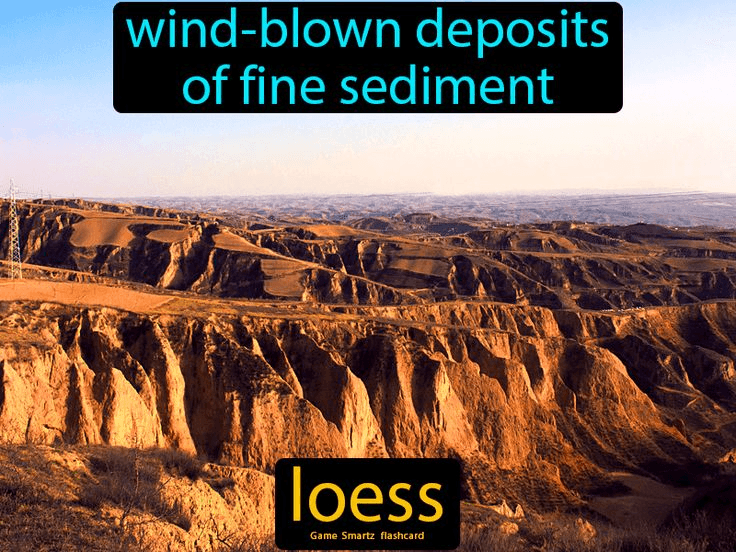
A. Loess is rich in minerals.
B. Loess contains bits of rock.
C. Loess does not erode easily.
D. Loess is very difficult to find.
A. Loess is rich in minerals.
What does the formation of erratics and kettle lakes have in common? (pg. 122)


Both kettle lakes and erratics are result of materials (Large boulders and chunks of ice, respectively) that were deposited by a glacier as it retreated.
A _______ happens when loose rocks fall down a steep slope
A. Creep
B. Rockfall
C. Landslide
D. Mudlfow
B. Rockfall
What is the process of breaking down or dissolving of rocks and minerals on Earths surface.
A. Erosion
B. Deposition
C. Weathering
D. Delta
C. Weathering
Name 3 landforms created by erosion by water
Name 3 landforms created by deposition by water
Erosion: Canyon, valleys, cave, sea cave, sea stack, sea arch, headlands, sea cliff, sinkhole
Deposition: Floodplains, deltas, alluvial fans,
beaches, sandbars, barrier islands
Why does a dune form over another object or obstacle, and not on flat ground?
On flat ground, the wind blows the sand away; when there is an obstacle, the sand gets caught. the wind keeps blowing more sand over time a dune is formed.
Even though continental glaciers tend to smooth landscapes, why is it unlikely a glacier would leave an area completely smooth?
A lot of deposition occurs when a glacier moves and then melts. Kettle lakes and erratics are examples of features left on a landscape after a continental glacier retreats.
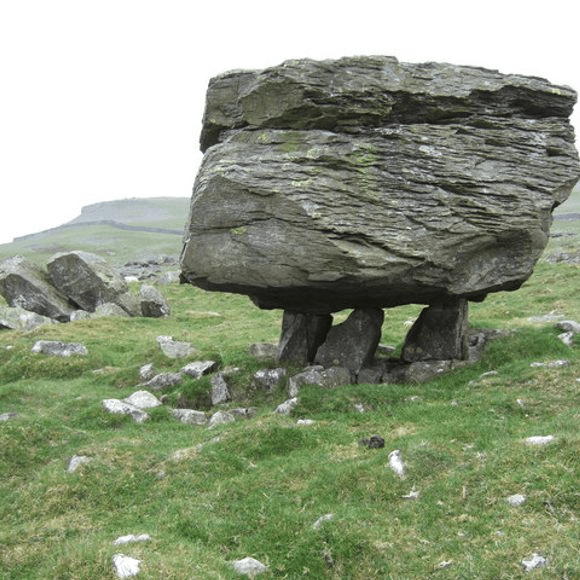
List 5 events that can trigger a mass movement
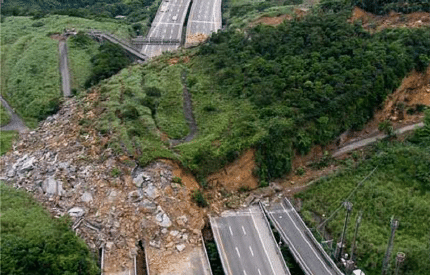
Heavy rains, deforestation, construction on unstable slopes, earthquakes and volcanic eruptions